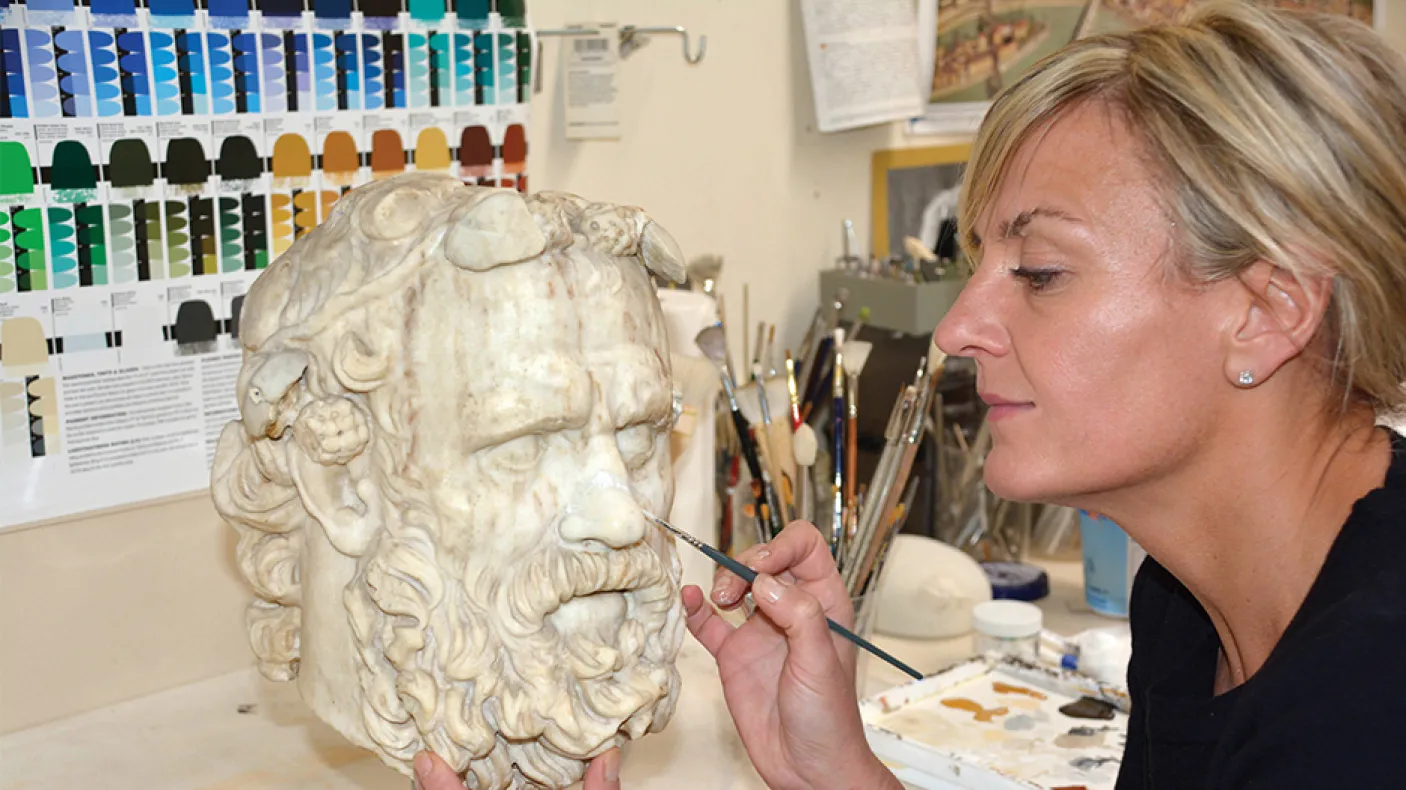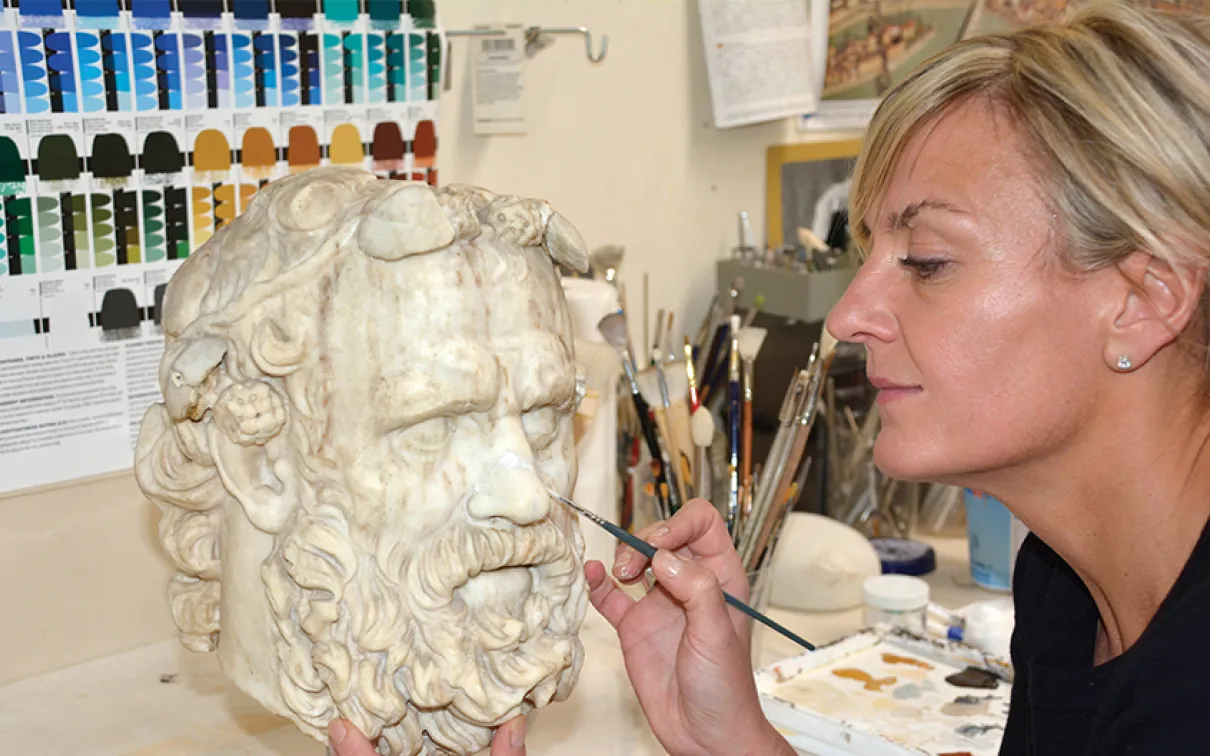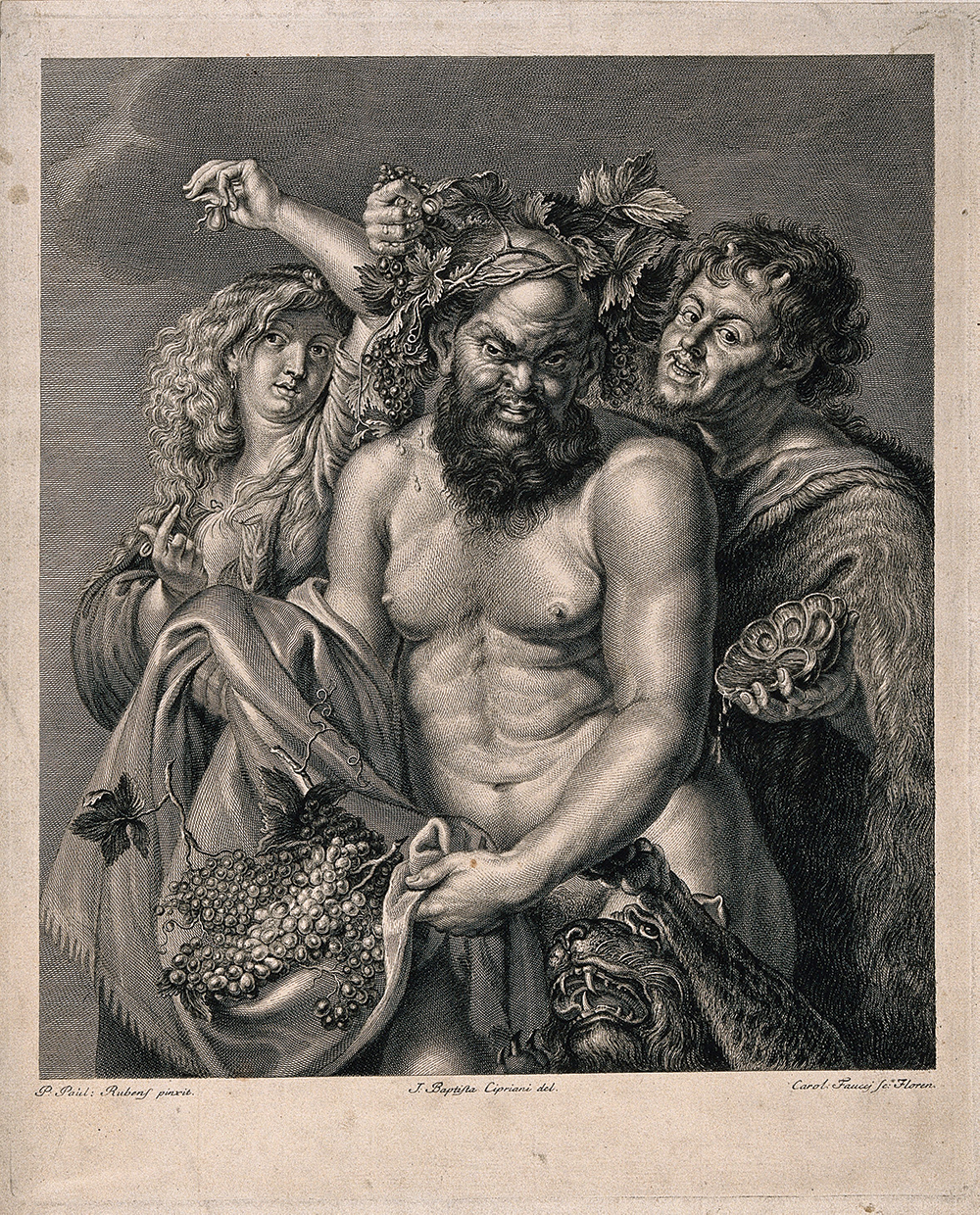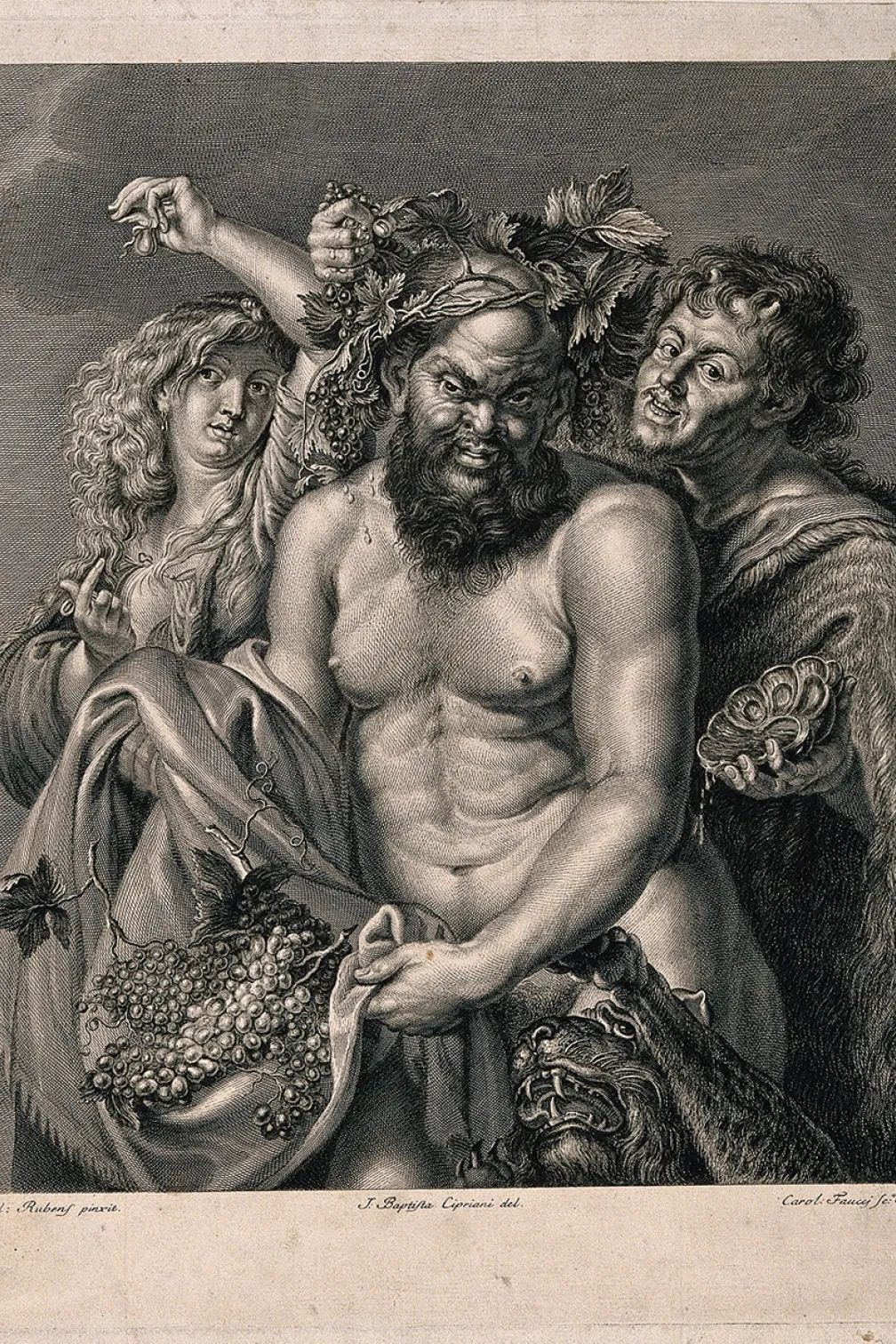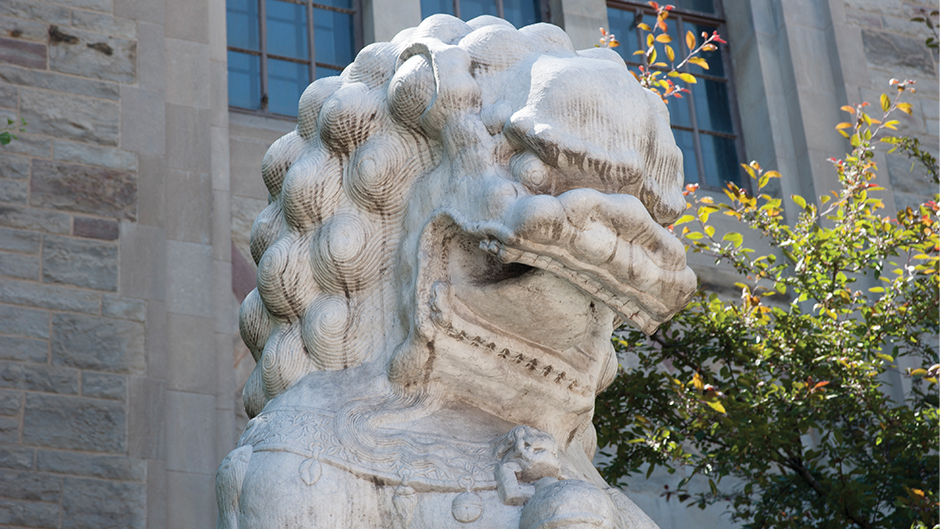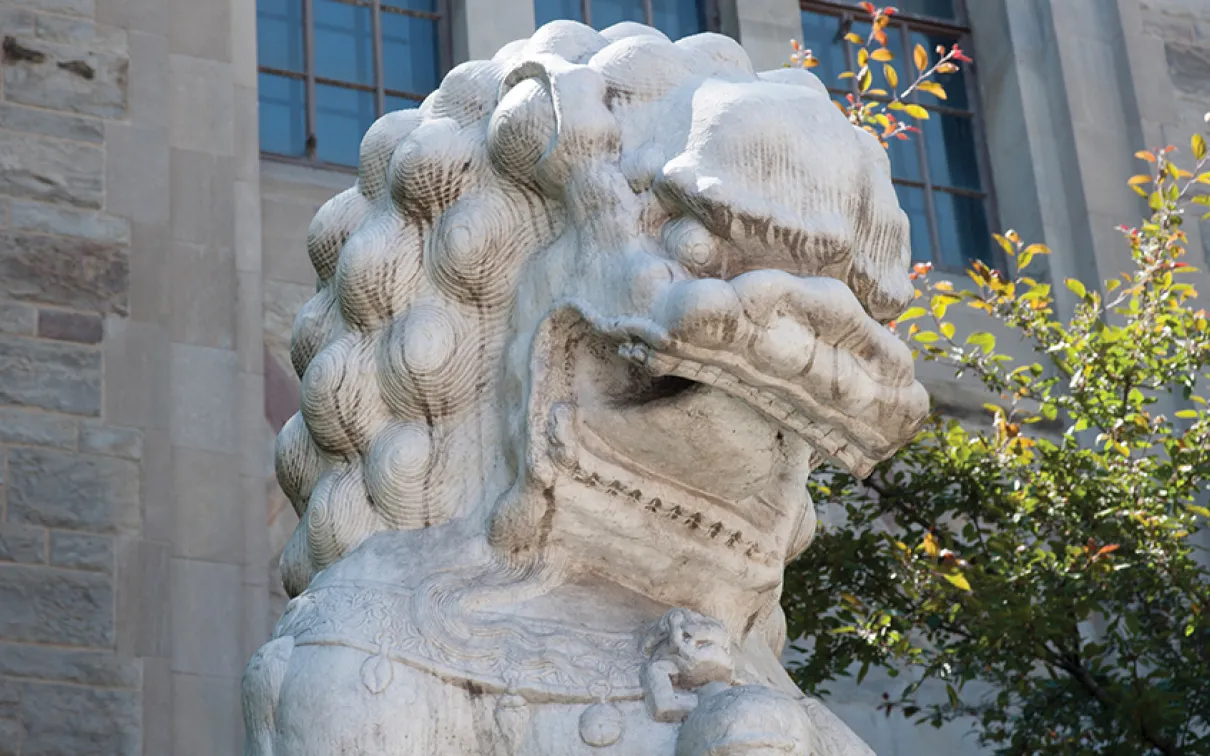Conserving History
How an ancient Greek statue found its way to our conservation lab.
Published
Category
Author
One of my colleagues
One of my colleagues in the Greek and Roman Art department was touring the galleries with her daughter when her daughter looked up into the face of Silenus and noticed that someone had taken a pencil to the figure’s mouth. I was called in to make an assessment, and after examining the sculpture, it became clear that the sculpture needs more work than just the removal of the graffiti.
Silenus has become soiled over the years
Silenus has become soiled over the years while on view in the gallery at the hands of eager visitors and now requires restoration. What’s interesting is that it took a child’s vantage point to discover the graffiti disfiguration on Silenus, which then turned him into a bigger conservation project.
A fair amount of work is needed to restore the sculpture. I estimate that it will take more than 40 hours to remove the graffiti, clean the sculpture, and address the discoloured restorations. The overall treatment of Silenus may seem straightforward; however, cleaning treatments can be tricky.
One must be very careful
One must be very careful not to take the cleaning too far by over-cleaning. Furthermore, all efforts should be made to preserve the object’s patina. The patina is, in many ways, the most important aspect of an ancient work of art. It is a complex surface that has accrued over time, preserving important historical information in its surface. Not only does a patina have an aesthetic quality, imparting a certain beauty and warmth to a piece, but it also conveys information such as the sculpture’s age, its history, and the context of its passage through time.
Cleaning is a very subjective activity. How far should one go when cleaning? What is the acceptable level of cleanliness one would want to achieve? These questions need to be discussed at length with the curator, who, is ultimately responsible for how the sculpture should look and be presented.
An important tenet in conservation is the idea of reversibility, meaning to ensure that any intervention made can be reversed without damage. Cleaning is the one exception to this rule. It is a process that cannot be reversed. As such, the cleaning process should be carried out in a very careful and controlled manner, since once it is removed, the soiling cannot be put back on in the event of a mistake.
Protecting the Lions
Cleaning a sculpture in a museum can be challenging. Cleaning an outdoor sculpture can be even more difficult. One extremely complex project was the cleaning treatment of the museum’s iconic 17th-century monumental marble sculptures of Chinese guardian lions, now on display at the exterior east entrance to the ROM. The lions stand at 13 feet 6 inches high, so at the outset, their sheer size posed problems of access. In order to clean the lions, we had to erect scaffolding so that we could reach the tops of their heads. The usual problems of cleaning applied, but the task was made even more difficult by the fact that the lions were displayed outdoors, where the environment is forever changeable and at times unpredictable and uncontrollable. The lions are exposed to seasonal changes in temperature and relative humidity every year, from winter cold and freeze-thaw conditions to the intense heat of the summer sun. Complicating things further are the harmful materials and products that come into contact with the sculptures, such as dirt and pollution, acid rain, winter road salts, and even damage by human action and vandalism, for example—when the lions’ protective winter coverings were set ablaze by a naughty passerby.
Laura Lipcsei
Laura Lipcsei is Senior Conservator of Ceramics, Stone, and Glass at the Royal Ontario Museum.
